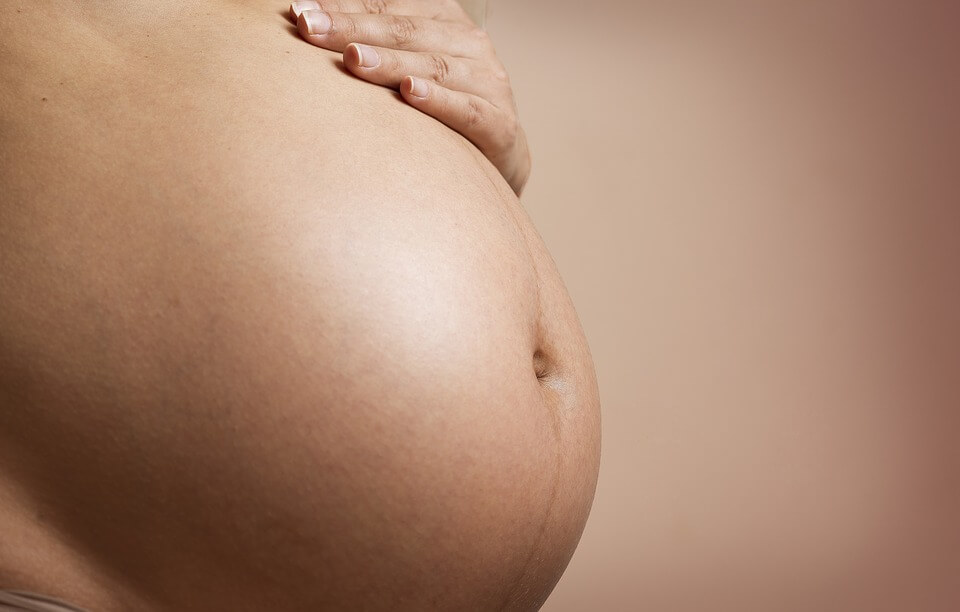What Is The Kristeller's Manoeuvre?

Kristeller’s manoeuvre is when a midwife or gynecologist presses down on the abdomen during the final stages of birth to aid a vaginal birth.
It was invented in 1867 by the German gynecologist Samuel Kristeller as a way to help difficult births. It’s recommended in emergency situations.
In birth preparation courses, midwives provide information about the possible risks involved in giving birth. They may also have told you about Kristeller’s manoeuvre and its use in difficult births.
However, there are common consequences such as dyspareunia or severe pain during sexual intercourse, broken ribs, damage to the abdominal muscles, uterine rupture, and many more.

When Is It Used?
This manoeuvre should only be carried out during emergencies and should never be used during a normal birth without complications.
The precise moment it is done is when the baby’s head is clearly visible and the expulsion phase has almost finished.
Kristeller’s manoeuvre is carried out when:
- The uterine contractions aren’t strong enough to push the baby out, even after the administration of oxytocin.
- The mother can’t push correctly because she’s tired or has a lack of control of her abdominal muscles.
- The baby’s pulse slows and is believed to be suffering.
- The baby is stuck in the birth canal and the head and shoulders are already out.
How to Do the Kristeller’s Manoeuvre
The mother will feel a sensation as if the doctor is jumping on her stomach to push the baby out. It’s a very painful manoeuvre and in some cases can cause the mother to pass out.
Despite being quite a simple technique, it should only be done by experienced people.
The doctor grabs the side of the bed or the sheets with one hand, places the other forearm on the upper part of the uterus. When the next contraction comes, with a firm push, their forearm slides down the length of the stomach, pushing down.
Kristeller’s manoeuvre cannot be repeated more than three times. So, if the woman is on her fourth pregnancy and has complications, then they’ll have to resort to other measures.
“Making the decision to have a child – it’s momentous. It is to decide forever to have your heart go walking outside your body” – Elizabeth Stone
When Should It Not Be Used?
For some women, this manoeuvre isn’t an option. It especially shouldn’t be used in the following circumstances:
- The baby’s head is much bigger than the available space due to a disproportion between the baby’s head and the size of the woman’s pelvis.
- There is a growth (such as a cyst) in the birth canal which is making it difficult for the baby to come out.
- A previous birth was done using a cesarean which has left the uterus more prone to lacerations.
- The mother has previously had an operation to remove a fibroid.
Complications
If this manoeuvre isn’t carried out correctly or is done at the wrong moment, it can cause various problems, including psychological damage.
Kristeller’s manoeuvre has some implications because the great pain can prevent the mother from being able to concentrate, and the whole moment becomes a painful one rather than the emotional one they were expecting.
Medically speaking, the main risks are:
- Needing to make an important episiotomy.
- Lacerations on the vagina and perineum.
- Detachment of the placenta causing suffering to the baby.
- Bruising of the uterus.
- Rupture of the uterus resulting in a hemorrhage.

Without a doubt, during birth, a mother isn’t able to think with normal clarity when medical personnel carry out Kristeller’s manoeuvre. This is why it’s very important that the mother know plenty of information beforehand to avoid panic attacks.
Midwives tend to play down this term, calling it “a little help to encourage the baby to come out.” But in reality, it’s a very delicate operation with many risks which should only be done by competent people.
Lastly, if the manoeuvre is carried out, it must be recorded in the mother’s medical records.